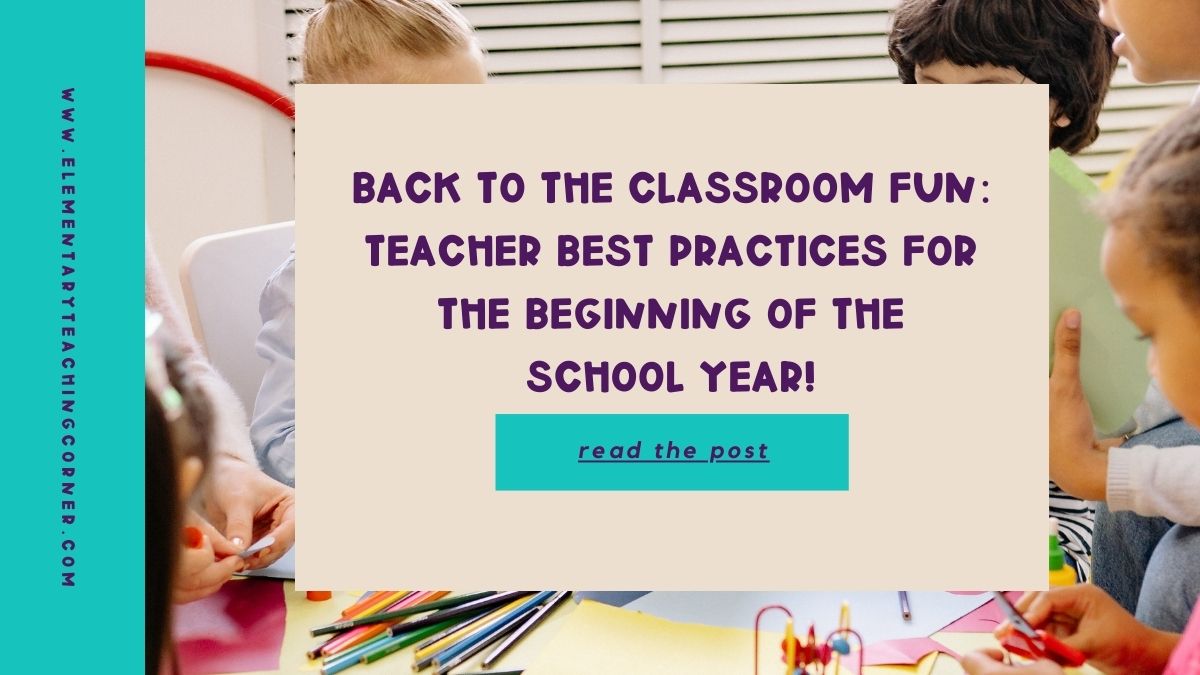Welcome to a New Adventure!
Getting Ready for a Fantastic Year Ahead with these Teacher Best Practices
Dear fellow elementary education teachers, it’s that time again! The start of a new school year is always a thrilling adventure, filled with endless possibilities and the joy of seeing our classrooms come to life once more. As an experienced teacher, I want to share some teacher best practices to ensure a smooth and enjoyable beginning for both you and your students.
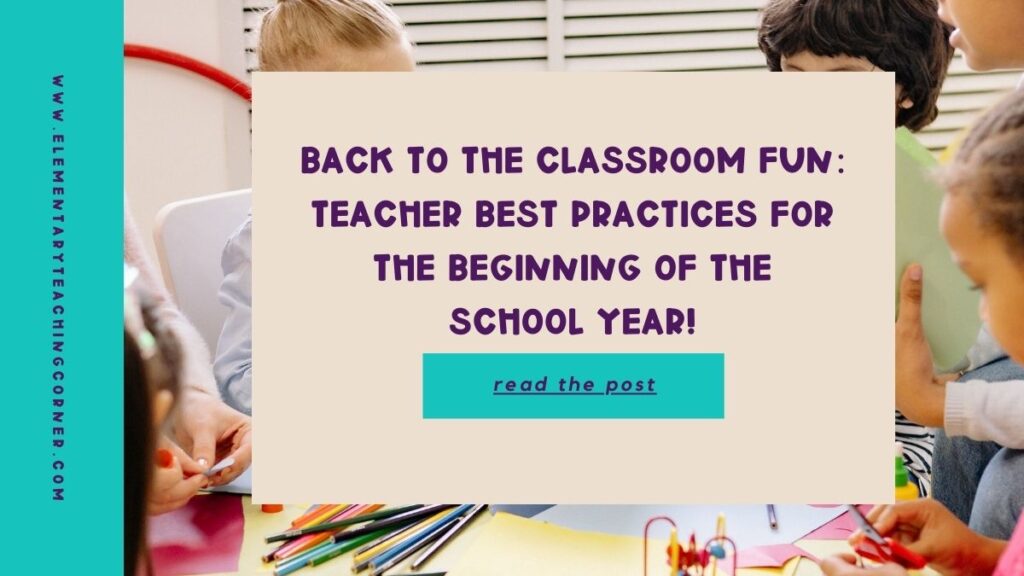
Preparing the Perfect Welcome
At the heart of this exciting journey is preparing your classroom for a grand welcome. Spruce up the walls with bright and colorful displays that showcase your students’ achievements from the previous year. Don’t forget to add some motivational posters and artwork to inspire your new class! One of my favorite ideas is to create a “Welcome Wall” with each student’s name and a personalized message to make them feel special right from the start.
Organizing Supplies for Smooth Sailing
Beyond decorating, ensure you have all the necessary supplies and materials organized and easily accessible. Consider creating labeled bins or folders for each subject or activity. Having everything in its place saves precious time and keeps the classroom running smoothly. Additionally, having an efficient system for distributing and collecting materials will help your students become more independent and responsible.
Creating a Warm and Inviting Classroom with these Teacher Best Practices
Setting the Stage for a Positive Learning Environment
As a teacher best practice, nothing sets the tone for a fantastic school year quite like a warm and inviting classroom. The first impression matters, so invest some time in making the space welcoming and comfortable. Arrange the desks or tables in a way that encourages collaboration and interaction. Set up a cozy reading corner with a variety of age-appropriate books, soft cushions, and bean bags, where students can unwind and immerse themselves in the world of literature.
Embracing an Engaging Theme
To make it even more special, consider having a theme for your classroom decor. Whether it’s a jungle adventure, an outer space odyssey, or an underwater exploration, a themed classroom can create a captivating atmosphere that ignites your elementary school students’ imaginations.
Student-Centered Decorations
Encourage students to contribute to the classroom decoration. Let them create artwork, posters, or even small displays related to the subjects you’ll be covering throughout the year. Their involvement in the design process will give them a sense of ownership over their learning space and make them proud to showcase their creations to fellow students and parents.
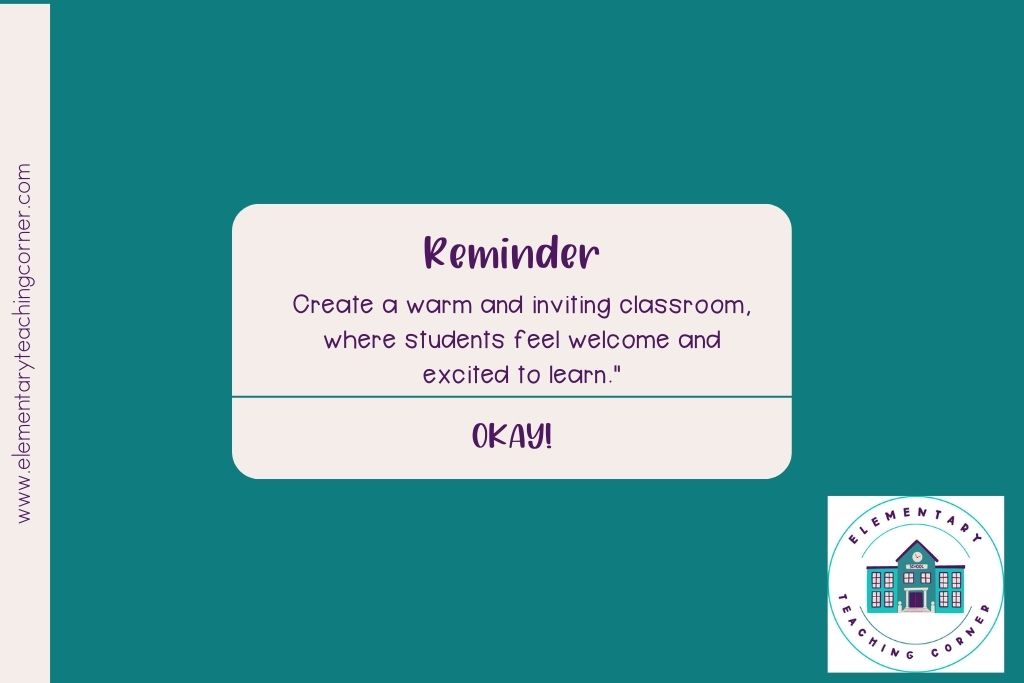
Establishing Classroom Rules and Expectations with these Teacher Best Practices
Empowering Students to Succeed
An essential step in the beginning of the school year is establishing clear rules and expectations for behavior and learning. As much as we want to create a fun environment, students thrive on structure and knowing what’s expected of them. A teacher best practice is engaging your students in a classroom discussion about the importance of having rules and ask them to share their ideas on how to maintain a positive and respectful atmosphere.
Collaborative Rule-Making
Once the rules are set, make sure to post them in a visible spot in the classroom. Use positive language in your rules, focusing on what you want to see rather than what you don’t want. For instance, instead of saying, “Don’t run in the classroom,” say, “Walk calmly and safely.” This subtle shift helps reinforce positive behavior and empowers students to take ownership of their actions.
Rewarding Positive Behavior
To further emphasize the importance of following rules, create a reward system that encourages positive behavior. For example, you can have a “Caught Being Kind” jar where you place a marble or a token each time you catch a student displaying kindness or helpfulness. Once the jar is full, the whole class can enjoy a special treat or a fun activity together.
Setting Goals and Building Relationships
Nurturing a Supportive Community
The beginning of the school year is an opportune time to lay the foundation for strong teacher-student relationships. Get to know your students as individuals by taking the time to talk to them and showing genuine interest in their lives. In the first week, plan fun icebreaker activities that allow your elementary school students to share their interests and hobbies with the class.
Connecting Through Icebreakers
Beyond that, encourage students to set personal and academic goals for the year ahead. Host a “Goal-Setting Conference” where each student can discuss their aspirations with you. It can be as simple as improving handwriting, becoming a better mathematician, or making new friends. By acknowledging and supporting their goals, you create a positive and motivating atmosphere in your classroom.
Fostering Teamwork and Cooperation
To foster a sense of community, organize team-building activities that promote cooperation and collaboration among your students. For example, you can divide them into small groups and have them work together to solve a puzzle or complete a creative project. These activities encourage communication, problem-solving, and teamwork skills, which are essential for a successful and cohesive classroom environment.
Engaging Icebreakers and Team-Building Activities
Bringing the Class Together with these Teacher Best Practices
Team-building activities are not just about breaking the ice; they are crucial for creating a sense of belonging and fostering cooperation among your students. One exciting game that never fails to engage elementary school students is “Human Bingo.” Create bingo cards with various statements like “Has a pet cat,” “Likes pizza more than burgers,” or “Has a sibling in high school.” The students will move around the room, trying to find classmates who match each statement and then get their signature. The first one to complete a row or column wins a small prize.
The Puzzle of Togetherness
Another fantastic activity is “The Great Puzzle Race.” Divide your class into teams and give each group a puzzle to complete. The twist is that each team gets only one piece at a time and must collaborate to solve the puzzle. This activity encourages communication, teamwork, and critical thinking—all essential skills for a successful school year.
Tech-Savvy Connections
For a unique twist on traditional icebreakers, consider incorporating technology. Use interactive quiz platforms or apps to host a “Guess Who?” game where students answer questions to uncover surprising facts about their classmates. This not only builds connections but also introduces them to new technologies in a fun and engaging way.
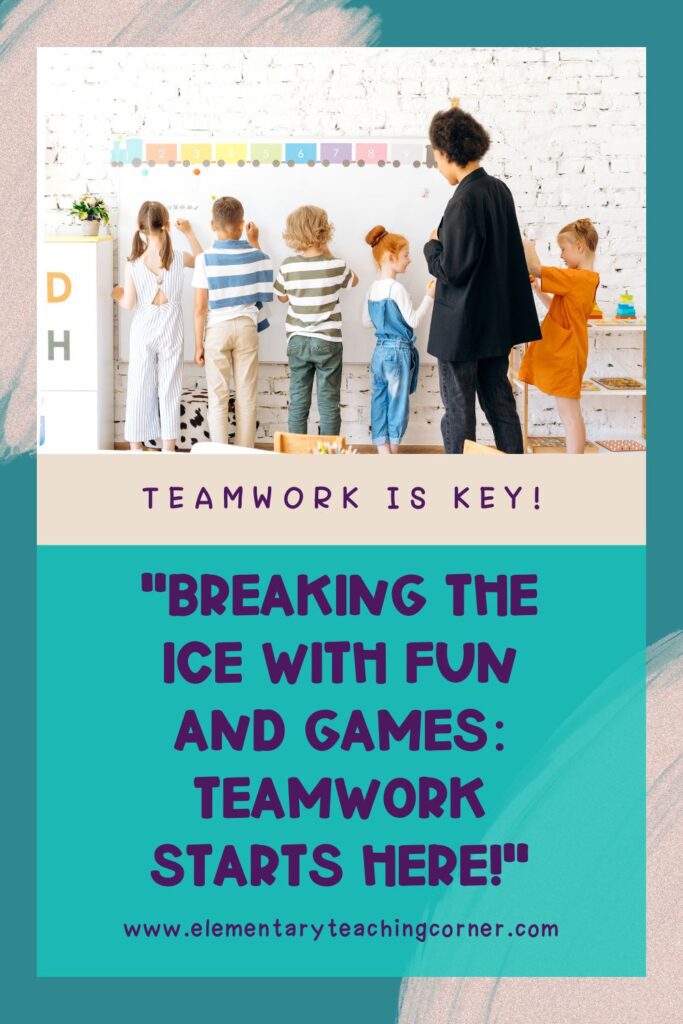
Setting the Tone for a Love of Learning
Spark Curiosity and Excitement with these Teacher Best Practices
As elementary school teachers, we have the wonderful opportunity to spark curiosity and excitement for learning in our students. Begin the school year with interactive lessons that capture their imagination and enthusiasm. For instance, if you’re teaching a history unit on ancient civilizations, organize a “time travel” activity where students imagine they are living in that era. Let them dress up as historical figures and have a “historical” debate about the most significant inventions of that time.
Virtual Adventures
Another engaging idea is to use technology to create virtual field trips. Take your students on an interactive journey to historical landmarks, zoos, or even distant planets. Virtual experiences can enrich their understanding of different subjects and make learning a thrilling adventure.
Reading Magic
To instill a love of reading and storytelling, kick off the year with a captivating read-aloud session. Choose a book that aligns with your class theme or curriculum and
Immerse your students in its captivating narrative. As you read, use expressive voices and gestures to bring the characters and plot to life. This shared experience will ignite their love for stories and foster a positive attitude toward literature.
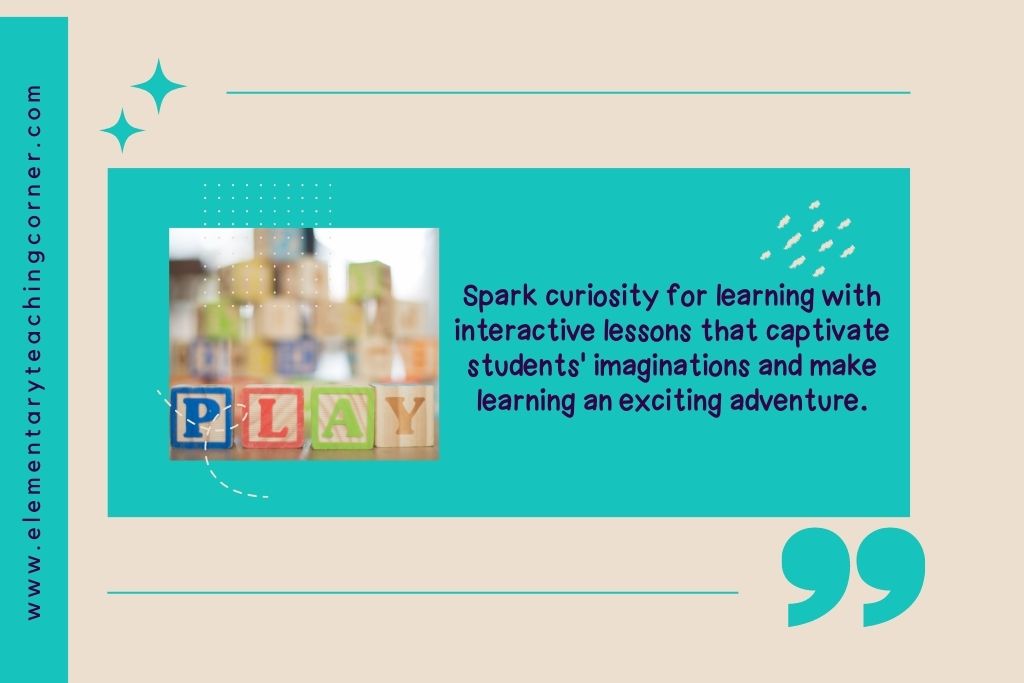
Establishing Routines and Procedures
Smooth Sailing Ahead
Routines and procedures are the backbone of a well-managed classroom. Establishing these early on ensures a smooth flow to your daily lessons. Start by creating a morning routine that includes activities like unpacking backpacks, handing in homework, and starting a morning warm-up activity. This consistent start sets the tone for a productive day of learning.
Transitions with Finesse
Teaching transitions is equally important, as smooth transitions save valuable instructional time and minimize disruptions. Use clear signals or cues, such as a countdown timer, a chime, or a specific hand gesture, to indicate when it’s time to move to the next activity. For example, you can say, “When you hear the chime, quietly move to your next station.”
Classroom Helpers
Along with setting routines for academics, establish procedures for classroom organization and cleanliness. Assign specific roles to students, such as “line leader,” “paper collector,” or “class librarian.” By giving students responsibility for maintaining order in the classroom, they’ll take pride in their roles and contribute to a well-functioning learning environment.
Emphasizing the Power of Positive Reinforcement
Encouragement Goes a Long Way
Positive reinforcement is a powerful tool in elementary school teaching. Praise your students for their efforts, hard work, and positive behavior. Celebrate their successes, whether big or small, with words of encouragement, high fives, or small rewards. A “star chart” is an excellent way to recognize achievements. Each time a student demonstrates positive behavior or reaches a goal, they can add a star to the chart. When the chart is filled, the class can enjoy a special treat or a fun activity together.
A Culture of Positivity
Remember to reinforce positive behavior consistently, as it creates a positive classroom culture where students feel appreciated and motivated to excel. Additionally, consider incorporating a “Kindness Challenge” into your classroom routine. Encourage students to perform acts of kindness toward their peers, teachers, or family members outside of school. Recognize their efforts and celebrate their empathy and compassion.
Parents as Partners
To extend the impact of positive reinforcement beyond the classroom, involve parents in recognizing and celebrating their child’s achievements. Send home “Positive Postcards” detailing specific instances of their child’s growth and positive behavior. This small gesture strengthens the connection between school and home and reinforces a supportive learning environment for the child.
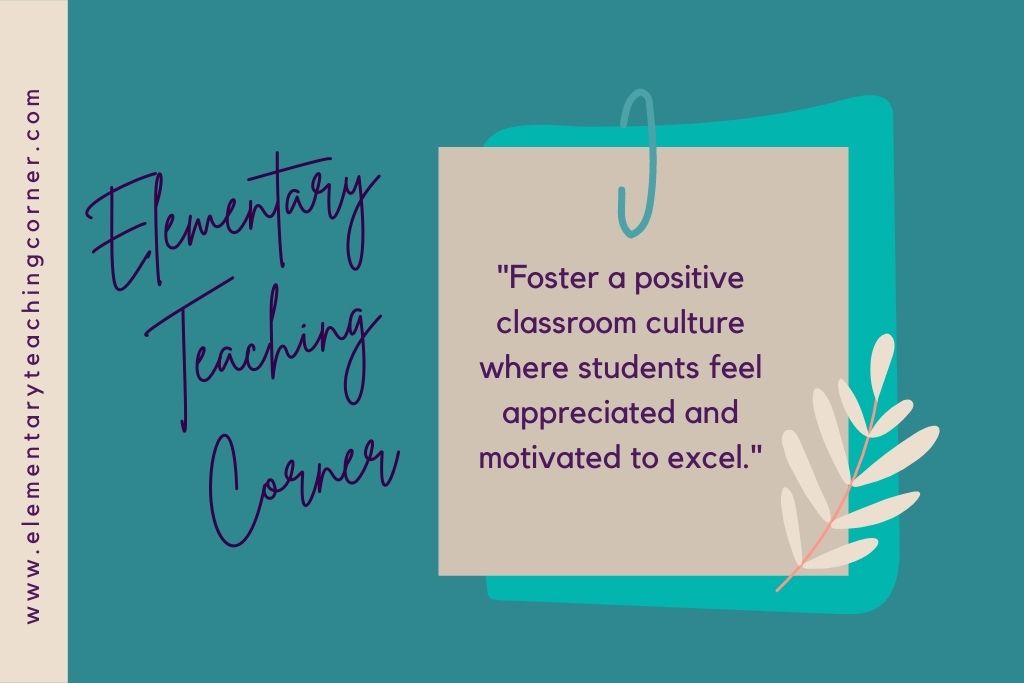
Involving Parents as Partners in Education
Collaborating for Student Success
Parents are an integral part of a child’s education journey, and it’s essential to involve them from the start. Send out a welcoming letter introducing yourself, your teaching style, and your goals for the year. Encourage parents to share information about their child’s interests, strengths, and areas for growth. This valuable insight will help you tailor your lessons to meet individual needs.
Keeping the Lines of Communication Open
Throughout the year, maintain open communication with parents through regular newsletters, emails, or phone calls. Provide updates on class activities, upcoming projects, and ways parents can support their child’s learning at home. Hosting a “Meet the Teacher” event is a wonderful opportunity for parents to get to know you and your classroom routines, as well as ask any questions they may have.
Parents in the Classroom
To further involve parents in their child’s education, invite them to participate in “Parent Visitation Days” where they can observe the class in action. Encourage them to share their expertise or cultural traditions during special presentations. This active involvement not only strengthens the bond between home and school but also enriches the classroom experience for all students.
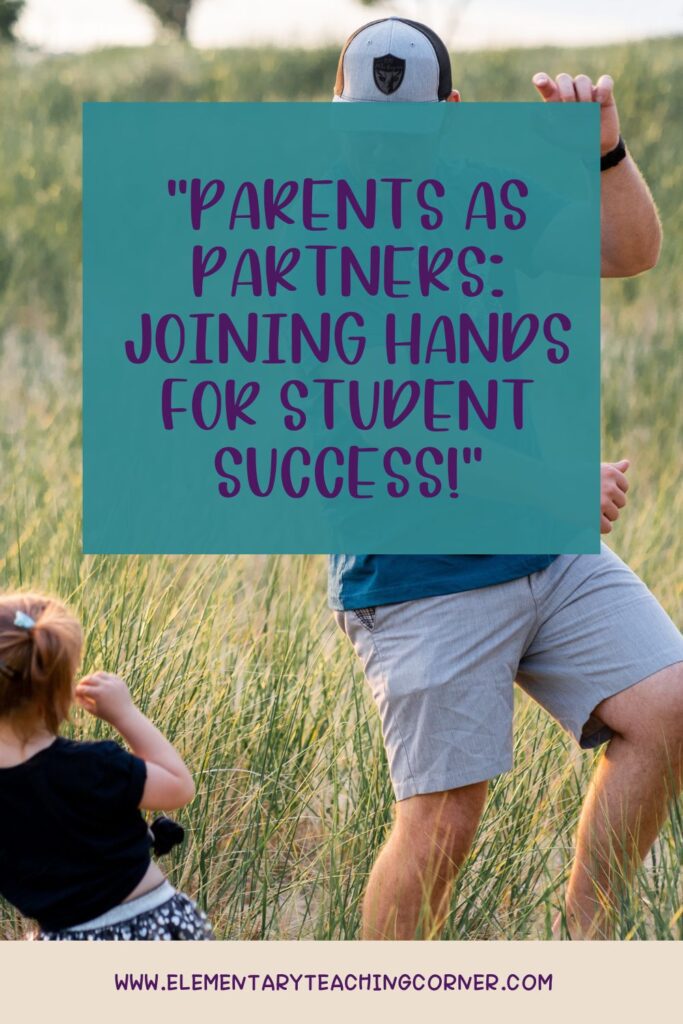
Embark on a Thrilling Journey!
Wrapping Up with Enthusiasm
As you embark on this exciting new journey with your elementary school students, remember that every day is an opportunity to inspire and be inspired. With these teacher best practices you will be creating a warm and engaging learning environment, establishing clear expectations, and fostering positive relationships, you’ll set the stage for a successful and joyful school year. Embrace the challenges and celebrate the triumphs, as each step you take will make a lasting impact on the young minds entrusted to your care. Here’s to an incredible year of teaching and learning together!

